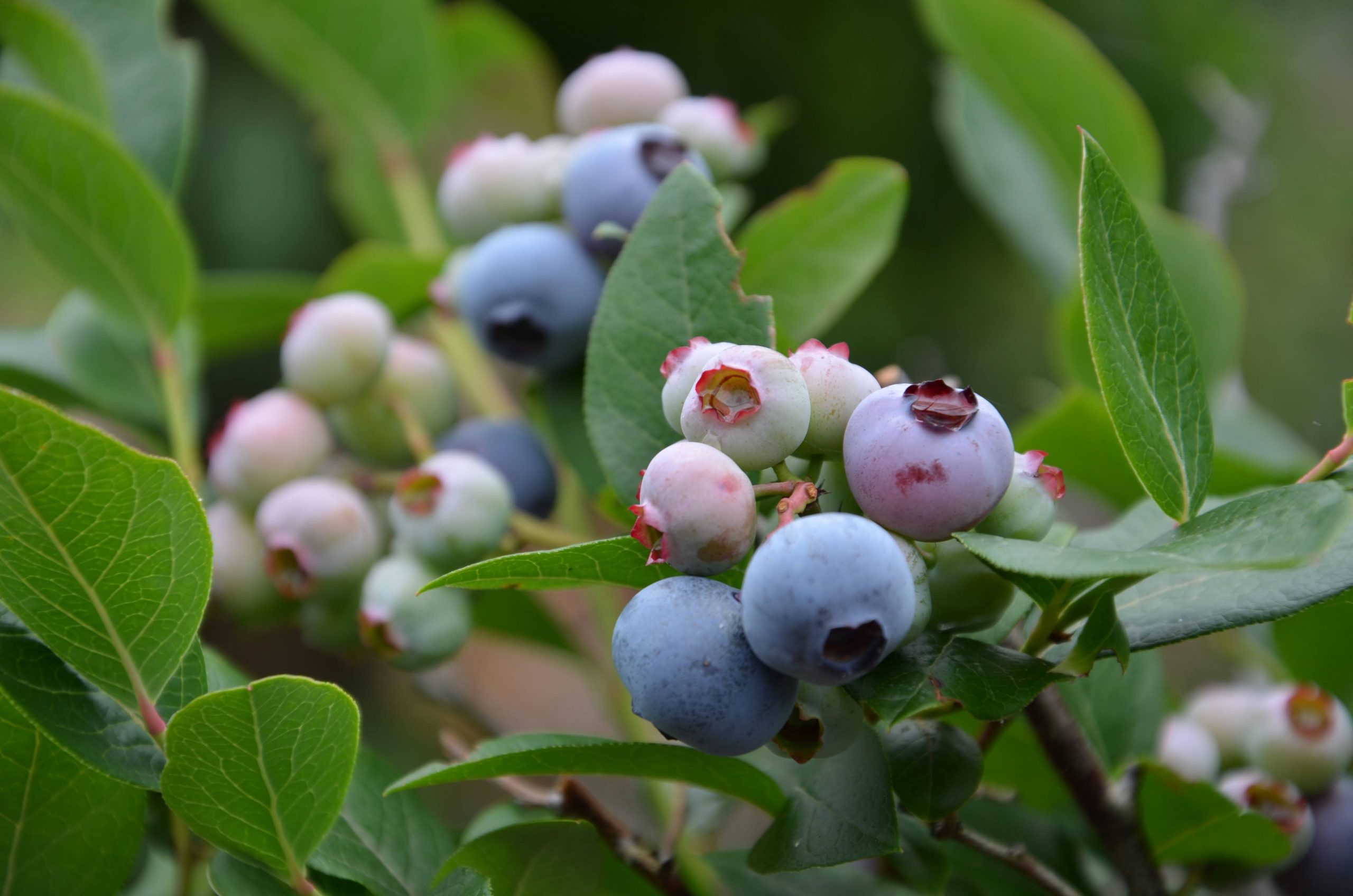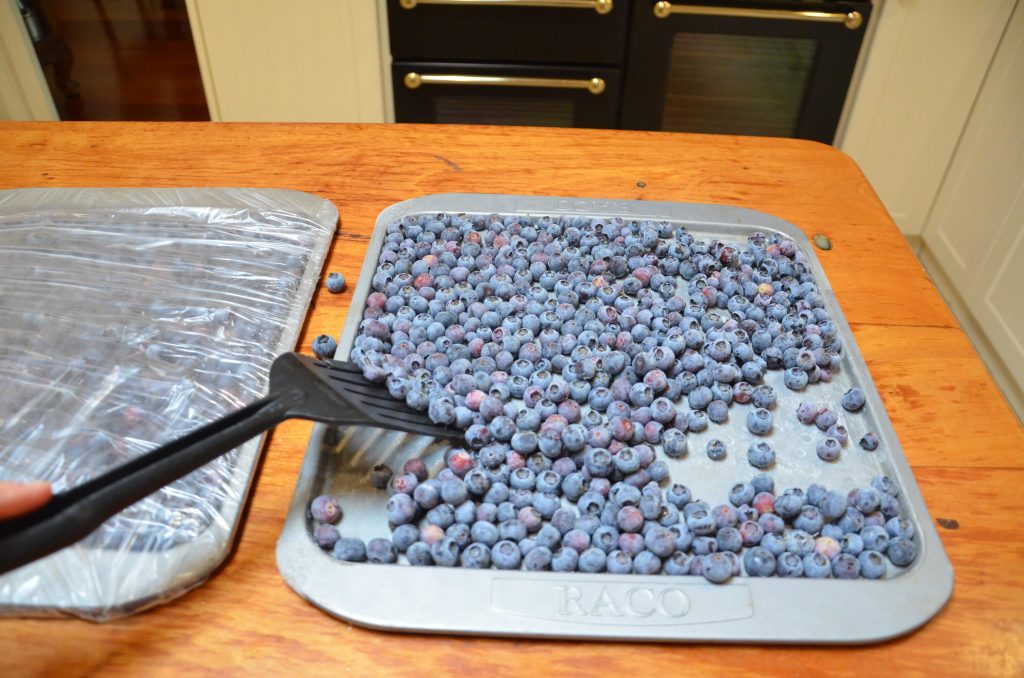
Home grown organic blueberries are just delightful. Compact and super easy to grow, blueberries are a must for anyone interested in growing their own food.
Blueberries are a long-lived plant and whilst they are expensive to buy, they will give you a lifetime of fruit if planted in the right position and maintained well.
Whilst Blueberries do exceptionally well in cool climates there are plenty of varieties that will grow successfully in warmer situations. Talk to your local nursery staff and see what varieties they recommend for your local area.
They can either be grown in the ground or in pots.
I have 14 Blue berry plants and have deliberately planted a range of varieties as this allows for better pollination and spreads my harvest over a longer period – usually from mid-December to mid-February.(Southern hemisphere). From these 14 plants I harvest enough fruit to have either fresh or frozen fruit all year.
Initial bed preparation is the key to success with Blueberries.
Blueberries need an acid soil that has lots of organic matter in it and is well drained.
Whilst I have an acid soil it does tend to get waterlogged in rainy periods, so I have planted my blueberries in a raised bed.
Even though my soil has quite a lot of organic matter in it naturally, I still improved the beds with lots of well-rotted cow and sheep manure. These two manures give lots of organic matter without a lot of nutrients. This really increases the friability of the soil, which is perfect for blueberries.
My blueberry bed is in full sun and protected from strong winds by an evergreen hedge to the south west of my plants. Blue berries will grow quite well in dappled shade, but your harvest will be reduced.
How I maintain my plants.
In early spring, I fertilise my plants with a balanced fertiliser which contains poultry manure, rock phosphate, blood and bone, potash, warm castings rock minerals, fish meal and a seaweed extract. There are a number of commercially produced fertilisers with similar combinations of ingredients. The idea is to supply your plants with a wide variety of nutrients and soil conditioners at the beginning of the growing season. I scatter about 2 cups of fertiliser around the base of each plant and water it in well.
I then mulch with either pine needles or mixed wood chip to at least a depth of 10cm.This helps conserve moisture, keeps weeds under control as well as adding an annual boost of organic matter to the soil.
Blueberries have a shallow fibrous root system so are not drought tolerant. I have irrigation set up with 2 drippers on each plant and water weekly during the growing season and twice weekly during extra hot, dry and/or windy periods.
Once harvest is complete, I prune my plants by removing any dead wood, cutting back older canes (3 or more years old) to ground level and clearing out any weaker growth in the middle of the plant. This allows more sunlight into the middle of the plants giving better ripening of fruit and good air flow around the plants to help preventing mildew outbreaks.
Harvesting.
You will need some form of protection for your plants to keep birds from eating the fruit.
Other than birds I have had few pest and disease problems. The occasional die back of a branch and some powdery mildew in very wet humid conditions.
Up until this year I have used a netting system consisting of a simple frame made from poly pipe, gently bowed, and pushed over the top of steel posts. Over this I draped 10 m wide netting and weighted down with pavers. I used to leave the netting in place all year.
Though it was a cheap I found the netting system difficult to access to maintain and harvest the fruit.
Now I have permanent steel structure over both my vegetable garden and fruit orchard, and I have transplanted all my bushes into these enclosures. They are now much easier to maintain and harvest. I wish I had put in proper enclosures years ago.
The fruit is borne in a cluster along the branches of the bush, with fruit ripening gradually throughout the bunch. I like to wait till the fruit is a beautifully dark blue and sweet to taste before picking them. Once fruit start to ripen, I harvest every second day or so but there is no stress here as they hold for a long time on the bush once they are ripe.
I can harvest 1-2 kg of fruit of each plant, which gives me plenty of fresh fruit during harvest time and heaps to freeze. I usually freeze enough to give me the equivalent of a punnet or 2 of fruit a week for most of the year.
They defrost well with little deterioration in fruit quality.
Occasionally I use the fresh and frozen fruit to make jam and baked goods but prefer just the plain fruit either fresh or thawed from frozen.
Growing Blueberries in pots.
Whilst Blueberries do well in pots, they need a good quality potting mix, one suited to azaleas and camellias is best.
You must ensure they are kept moist all the time with extra care taken during hot dry and windy weather. An application of a soil wetting agent once a month during summer will help retain moisture.
They need to be fertilised regularly with a balanced fertiliser that will encourage strong healthy growth but also support flowers and fruit. A slow release fertiliser recommended for azaleas and camellias again would be suitable.
I would recommend repotting them each year after purchase, into a pot slightly larger than their present pot size until you reach a size of pot that you can easily handle, say 300 mm. Then repot them every 3-4 years.
To be able to keep them in the same size pot when repotting, cut away about 10-20 cm of the root ball and repot with new potting mix to maintain healthy growth and production.


How to preserve your excess crop.
Freeze whole fruit. Check out my blog post on freezing blueberries here.
Dry them either in a dehydrator in the sun and store in airtight containers in a cool dark place.
Make into jams and jellies.
Make into baked goods- muffins, cakes pies etc and freeze.